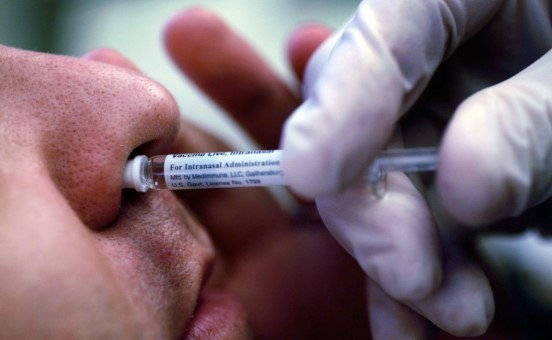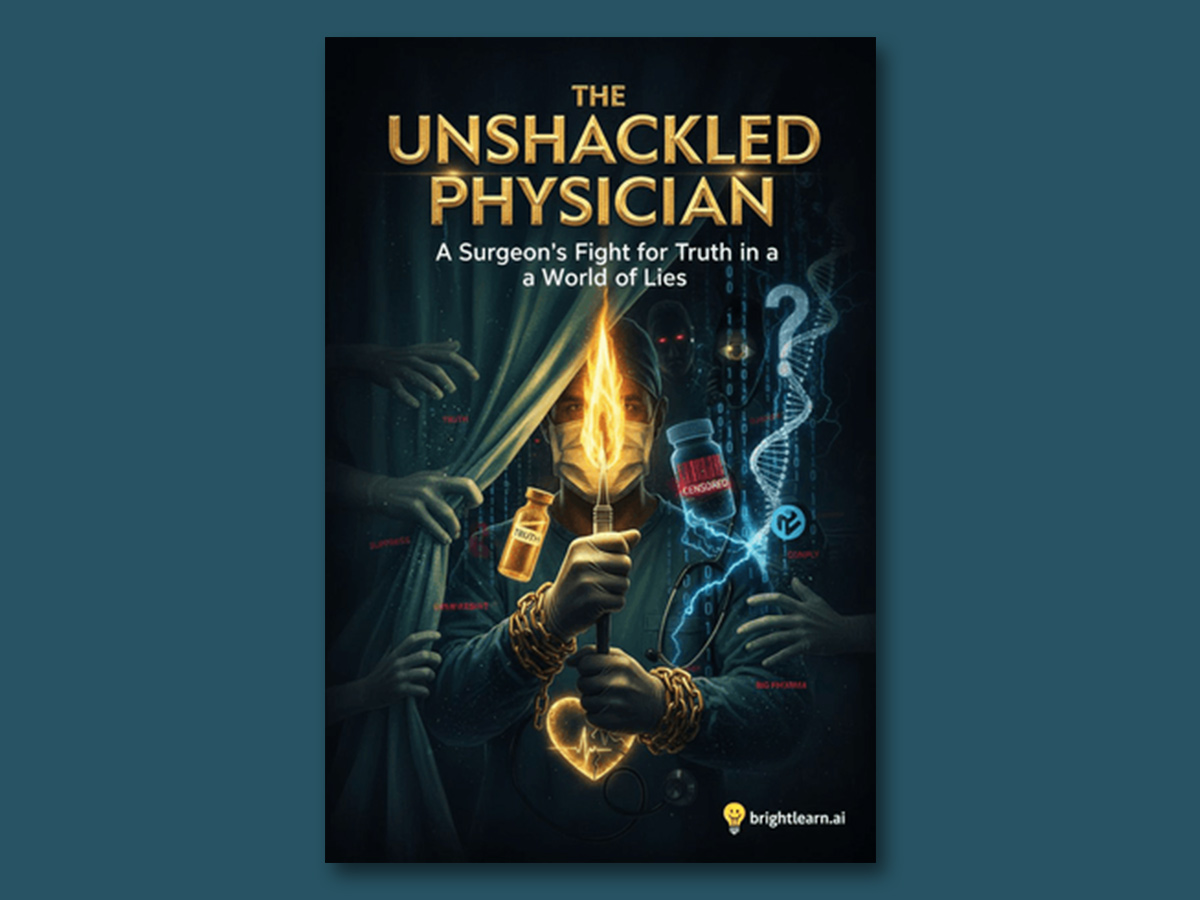
- FDA approves home use of the nasal spray flu vaccine: The live, intranasal flu vaccine will now be mailed directly to households for self-administration during the 2025–2026 flu season, with mainstream media heavily promoting it as safe and convenient.
- Effectiveness remains questionable: Clinical data show the nasal vax does not reduce hospitalization or death, failed to demonstrate efficacy in adults, and even increases hospitalization risk in young children.
- Concerns over live virus shedding: Because it contains a weakened live virus, recipients can shed the spray vax for up to 28 days, potentially exposing others, though limited research has been done on the risks of transmission.
- Safety gaps for vulnerable groups: Safety in pregnant and breastfeeding women remains unclear, post-marketing surveillance is weak, and the nasal spray vaccine has not been studied in high-risk groups such as immunocompromised adults.
Nasal vaccine approved for home use
Mainstream media outlets have enthusiastically promoted this development, presenting the DIY nasal vax as a convenient and innovative solution. However, much of this coverage avoids discussing risks or limitations. Unlike pharmaceutical advertising, which is legally required to balance risks and benefits, media reports often omit side effects entirely, giving the public a one-sided view. The nasal spray vaccine is a live, attenuated influenza vaccine (LAIV). Instead of delivering an inactivated virus like the traditional flu shot, it uses a weakened live virus that replicates in the nasal passages. The idea is that localized infection will stimulate immune protection. But even the manufacturer's own package insert concedes that the exact mechanism of protection is not fully understood. Importantly, the virus can shed for up to 28 days, meaning vaccinated individuals may spread it to others, including vulnerable populations. Efficacy data for the nasal flu vaccine raises additional concerns. Studies show no reduction in hospitalization or death, and effectiveness in adults is weak. In clinical trials, adults aged 18–49 showed no demonstrated protection against febrile illness, while adults over 50 derived no significant benefit at all. Children under two face an increased risk of hospitalization from the nasal spray live vaccine, and children aged 2–5 do not experience reduced hospitalization rates. For older adults and high-risk populations, including the immunocompromised, it was not adequately studied. Safety questions remain unresolved, particularly for pregnant and breastfeeding women. While the manufacturer suggests it is safe, the CDC continues to recommend the inactivated flu shot for pregnant women instead. The package insert does not clearly present this guidance. Unlike most pharmaceuticals, vaccines are exempt from long-term testing requirements such as carcinogenicity, mutagenesis, or fertility studies. Post-marketing safety surveillance exists but is inconsistent, and the government’s Vaccine Adverse Event Reporting System (VAERS) is notoriously difficult for the public to navigate. The gaps in transparency extend beyond safety. Despite FDA approval of the nasal spray vaccine, the manufacturer provides no clear data showing prevention of severe outcomes such as hospitalization or death. Comparisons against early treatment modalities, such as antiviral medications, are also missing. As a result, consumers are being encouraged to use a live-virus nasal spray without a complete picture of its risks and benefits. Critics argue that the FDA has once again prioritized pharmaceutical convenience over rigorous public safety standards. The approval of home administration, combined with aggressive marketing and limited discussion of side effects, may lead to widespread use without fully informed consent. The bottom line: At-home availability of the nasal spray vaccine is being marketed as a breakthrough, but its clinical track record is mixed at best. Risks include viral shedding, limited efficacy in adults, hospitalization risks for young children, and uncertain safety in pregnancy. For those concerned, bolstering natural immunity through healthy lifestyle practices—such as maintaining vitamin D levels, limiting sugar intake, getting quality sleep, and considering early treatment options—remains an alternative strategy. Bookmark Vaccines.news to your favorite independent websites for updates on experimental gene therapy injections and vaccine nasal mists that lead to early death, infertility, turbo cancer and Long-Vax-Syndrome. Sources for this article include: NaturalNews.com DrBowden.substack.com ScienceDirect.com AstraZeneca.comDenmark summons U.S. diplomats following covert influence campaign in Greenland
By Ramon Tomey // Share
FDA recalls ice cream in 16 states over undeclared nuts after a packaging mix-up
By Olivia Cook // Share
FDA ends emergency vaccine mandates: Independent doctors celebrate “return to sanity”
By Willow Tohi // Share
From fake robots to poisoned food: Health Ranger exposes globalist deception on multiple fronts
By Finn Heartley // Share
Trump’s ICE surge nears 200,000 deportations as airlines hide flights from public view
By Cassie B. // Share
Iran conducts surprise missile drills amid rising tensions with Israel
By kevinhughes // Share
Kremlin denies reports of plans to "restore Soviet influence"
By bellecarter // Share
How AI news bots are quietly reshaping public opinion
By avagrace // Share
The Unshackled Physician: A surgeon's awakening to medical tyranny
By ramontomeydw // Share











